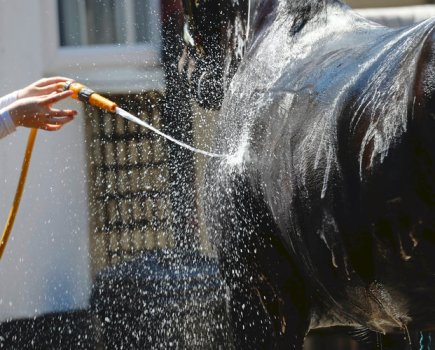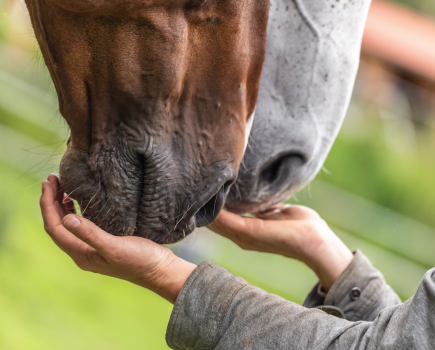Summer can be a tough time on your horse’s legs – with hard ground, jarring and tendon injuries are more common. So, what can you do to help? Veterinary surgeon Gil Riley, of Pool House Equine Clinic in Staffordshire, is on hand to help you keep your horse’s legs sound and healthy.
As with all injuries, prevention is better (and cheaper) than cure, and this starts with the help of a good farrier, as a well-balanced foot will make a horse less vulnerable to tendon problems.
Next pay close attention to your horse’s warm up and cool down routines.
Tendons are not standalone structures, but rather the means by which muscles attach to bone, so the state of the muscles has a major impact on the demands made on the tendons.
If your horse’s muscles aren’t properly warmed up before exercise, this will put excessive strain on the tendons, while if his muscles aren’t allowed to cool down after exercise, you risk him feeling stiff and sore the next day, predisposing the tendons to injury.
Finally, it’s vital that you build up your horse’s fitness gradually. A sensible fitness regime will minimise tired muscles and, in turn, reduce the risk of tendon problems.
DID YOU KNOW?
A tendon is designed to stretch 8%. Push it between 8% and 15% of its length and this can be described as excessive force. Push it more than 15% and you’ll risk damaging the delicate tendon structures.
Warning signs
There are two main signs of tendon injury:
- Heat and swelling, especially at the back of the cannon in the case of SDFT injuries, is a common sign of a tendon problem (classically referred to as ‘bowing’). This may be accompanied by mild lameness, although some horses show no signs of pain and therefore, in the early stages of the injury at least, don’t show any lameness. This is a very important fact to be aware of and emphasises just how vital it is to check your horse’s legs regularly, and especially before and after working. Failure to do so may result in you making a mild injury much worse.
- If your horse flinches when you pick up his leg and then gently squeeze the swollen area to the back of the cannon between your finger and thumb, this is a sure sign of injury to the SDFT.
If you spot any unusual swelling on your horse’s leg, especially in the middle of the back of the cannon (which can appear ‘bowed’ in severe cases), if he suddenly goes lame, or shows mild lameness, it’s time to call your vet.
Don’t miss the latest issue of Your Horse Magazine, jam-packed with training and veterinary advice, horse-care tips and the latest equestrian products, available now.









